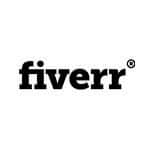Any working professional’s dream is to be able to work when and where they want. But up until recently, this remained just that, a dream.
However, the digital revolution in which we find ourselves has helped to change this, and it’s now possible to work for yourself and set your own hours.
And the best part? You can actually make a decent living doing it.
If you’re new to freelancing, one of the biggest obstacles is finding work. Not only do you need to locate clients in need of your services, but then you need to convince them they should hire you and not someone else.
Freelancer websites are a useful resource for helping you find work and manage client relationships, but there are a lot out there to choose from, some of which aren’t as good as they might seem.
So to help you, here’s everything you need to know about the best freelancer websites available to you today.
The Best Freelance Websites for Finding Work Online (Overview)
We’ve included an overview of our top picks below. For detailed information on each pick, scroll down.
Editor’s Recommendation
What Does a Freelancer Website Do?
Freelancer websites are similar to job boards, but they work in different ways. However, each operates on a similar principle, which is that they are trying to connect freelancers looking for work with clients looking for help.
But each site pursues this goal differently, and the two main approaches are:
- Bid-based freelance websites: On these types of sites, you log in as a freelancer and look at all the different jobs available. Then, you apply to the ones that interest you by submitting a proposal that details the timeline for the project as well as your rate.
- Marketplace-based freelance websites: In this setting, freelancers make profiles and list their services on the site. Then, when a client needs something, they can go through the profiles of those who might be a good fit and contact people that interest them.
However, freelancer sites do a lot more than this, which is part of what separates them from regular job boards.
For example, freelancer sites will usually facilitate payment between you and the client, which puts a trusted third party between you and the client and helps facilitate a better working relationship.
Furthermore, most freelancer sites have a messaging platform so that you can communicate easily with your clients without having to give out your personal information.
Freelancer sites also provide both freelancers and clients the opportunity to review one another, helping both boost their reputation and be more successful in finding what they seek on a freelancer site.
How to Choose the Best Freelance Platform

As you can see, there are many benefits to using a freelancer website, but not all freelancer websites are going to get you the work you want. With so many freelance websites on the internet, just how do you choose the best one?
One of the most crucial things to look for is its popularity with businesses — the more potential clients there are, the faster (and easier) it’ll be for you to get a job.
And since most freelancer websites operate as for-profit businesses, there are fees involved with each one, and this may make it easier for you to decide which one is right for you.
Overall, when looking at a freelancer website, you should be keeping an eye out for the following things:
- How many people are on the platform? This will give you an idea as to how popular the site is, which can serve as an indicator of how easy it might be to get work.
- Are there membership fees? Some sites will charge you to join as part of their business model, so you’ll want to find out how much this and decide if it makes sense for you based on how much you’re planning to earn as a freelancer.
- Are there any commissions? Various freelancer platforms choose to charge commissions for each job. This can either be in place of a membership fee or in addition to it.
- Are there any requirements to join? Some freelancer platforms base their business on only offering high-quality talent. And while you may be just that, these sites are going to want to see proof of it before they let you join, such as past work samples of client testimonials. These things may be tricky to come up with if you’re just getting into freelancing, but don’t worry, there are other options.
- Does the site specialize in any type of work? Specialized sites geared towards one profession, such as web development or graphic design, help people in that profession find work more easily. But, obviously, if your skills don’t match those highlighted by the site, then you’re going to struggle to find work on that platform, meaning you should seek out other options.
The Best Freelance Websites in 2023
Now that we know what to look for in the different freelancer sites out there, here’s a breakdown of some of the top options.
1. Fiverr
Fiverr is one of the most popular freelancer platforms out there.
Fiverr gets its name from the idea that freelancers offered jobs that they would do for $5. For example, you could offer 500 words of content writing, or one page of copy editing, for $5. Then, clients would hire you based on this rate.
While you are not limited to earning $5 per job on Fiverr, the origins of this site have helped it gain a reputation as a place where clients can get inexpensive yet quality work.
How Does Fiverr Work?
To start working with Fiverr, all you need to do is make an account and set up a profile. In fact, that’s all you can do, because with Fiverr you can’t search for clients. There is no job board. Instead, you will need to wait until clients reach out to you.
And part of the way you get work on Fiverr is improving where you show up on search results. For example, if someone types in “web copywriting,” and your profile shows up on page 5, there’s probably not a lot of hope you’ll get work.
But the Catch-22 is that you can only improve your ranking by completing jobs on the site. As a result, to get work, you need to either offer a highly specific skill or a great rate, or you need to find a way to market yourself outside of Fiverr.
The site will provide you with a link to your profile, which you can send out for people to use, and this will help you boost your profile ranking and get more work.
Fees On Fiverr
Fiverr charges freelancers a flat rate of 20 percent of all transactions. This means that while you may be charging $5 for a service, you’re only receiving $4.
2. UpWork
UpWork came about after oDesk and Elance, which were both big players in the early years of freelancer platforms, merged in 2014.
And as a result of this merger, UpWork is now one of the most popular freelancer websites out there. The site claims there are over 1.5 million clients using UpWork, which makes it one of the largest freelancer platforms.
This is a great option if you’re new to freelancing, as the sheer number of clients means there is a good chance you’ll find someone willing to take a chance on an unknown entity.
Even once you build up a reputation, UpWork is still where the majority of clients are, so once you start, you’ll likely be a member for life.
How Does UpWork Work?
In general, there aren’t any skill requirements for joining UpWork.
You start by making an account and a profile, which pretty much anyone can do. You may need to demonstrate that you have the skills you claim you do, but UpWork usually lets the market figure this out on its own.
Once you have an account, you will be given a set number of “Connects,” which are credits that allow you to contact clients and apply for job postings.
With the free account, you get 60 connects per month, but you can upgrade to a paid membership to get more.
Getting Jobs on UpWork
There are two ways to get jobs on UpWork:
- Apply to available jobs on the UpWork job boards by responding to whatever questions the client asked and also by offering your most competitive rate.
- Receive an invitation from a client to submit a proposal. They may have a budget in mind, but you will still need to propose a rate for the work, which the client must agree on for the contract to start.
After you’ve landed a client, you will enter into a contract that exists within the UpWork platform.
The site will urge you to keep all communications and payments within the platform, as this allows them to uphold the protections they offer to both clients and freelancers.
Jobs are typically posted on a per hour or per project basis.
If it is an hourly contract, you’ll need to use the UpWork time tracker to log your hours. If it is a per project basis, there is no need to track time.
The time of contract you take will depend on your skillset, for instance, freelance writing gigs are typically per project, while other tasks can be hourly.
But you are technically free to communicate with clients through whichever channels make sense for you.
Fees on UpWork
- 20% of earnings up to $500
- 10% for earnings between $500-10,000
- 5% for earnings above $10,000
And remember: this is for each client. So if you earn $5,000 in a month, but you do so with 10, $500 contracts, you’re going to pay the 20% rate for everything you earn.
This is definitely one of the negatives of UpWork, but most will say that the fees are worth it considering how relatively easy it is to find jobs in UpWork’s rather large community.
There is a lot of competition on UpWork, but many hard working and talented freelancers are making very good money working full-time exclusively on this freelance platform.
3. TopTal
A relative newcomer to the freelancer world, TopTal is focused on helping clients find and hire the best possible talent, largely because it’s true that it can, at times, be difficult to find good help. However, because of this, TopTal is not for everyone.
First, it is geared specifically for web developers, so those who don’t have that kind of experience need not apply.
Second, it’s quite competitive. They only accept 3 percent of the freelancers who apply because they feel that exclusivity is what makes them unique.
So if you’re new to freelancing, or if you haven’t spent a lot of time with it, then this might not be the site for you.
Joining TopTal
Because of its competitive nature, TopTal has an extensive application process that will have you fill out a questionnaire, interview with someone at TopTal, and also provide testimonials from past clients and examples from past projects.
Fees On TopTal
One of the main advantages to TopTal is that it pays better than most other freelancer platforms.
By promising top talent, the site can charge clients more, and this means freelancers win.
And since TopTal’s business model is based on providing clients with access to the best talent, freelancers aren’t charged fees, only clients.
4. People Per Hour (PPH)
People Per Hour provides a nice happy medium between some of the more accessible sites such as UpWork and the more competitive ones, such as TopTal.
How Does PPH Hour Work?
In terms of functionality, PPH is very similar to UpWork, although the screening process takes a bit longer.
You start by making an account and a profile, and then you may need to wait for someone to approve your account before you can start applying for jobs. But once your account is live, you can apply for as many jobs as you want.
You’re provided with 15 proposal credits each month, but you can get more by upgrading to a paid membership. Clients can also send you invitations on PPH, so you may get opportunities in addition to the jobs you pursue on your own.
And once you’ve completed a job, both you and the client will have the chance to review each other. Because of this PPH is another good option for those who are new to freelancing or just getting started.
Fees With PPH
PPH charges a flat fee of 10 percent, which will come directly out of your billings. So if you agree to do a job for $500, you will only see $450.
However, there could be more fees depending on which payment method you use, e.g. if you withdraw funds to a PayPal account. PPH makes use of so many different payment methods means that you can get your money faster than with most other platforms.
5. 99Designs
While UpWork, Fiverr, and PPH can all be used to help you find work as a graphic designer, 99Designs is probably the best place for designers and creatives. It’s designed specifically for freelance designers, and you’re therefore more likely to find work on this site than any other.
How Does 99Designs Work
If you’re thinking of trying to find work on 99Designs, then you need to start by submitting an application.
They will want to see some of your past work and any other qualifications you have. And if you meet what they are looking for, then you’re into the community.
At this point, you don’t need to do much.
You’ll indicate your availability as well as some of the projects you’d be interested in working on, and the people at 99Designs will put you in touch with clients.
In this sense, 99Designs works almost more as an agency. Clients reach out to them and “purchase” things, such as logo creation, and then the folk at 99Designs send this work off to one of their freelancers. As a result, rates are set by someone else, and you don’t have much control of them.
Fees With 99Designs
Because clients pay fixed prices for different design needs, you aren’t charged any fees on your earnings. However, as mentioned earlier, these rates are fixed by 99Designs, so make sure you know what you’re getting into before accepting a project.
Tips For Landing Freelance Jobs
As you can see, despite some annoying fees structures, freelancer sites are a great way to launch your freelancing career and start making some money.
But there is a bit more to it than just making an account and waiting for cash to roll in, so consider these tips to help you get going in the right direction:
1. Spend time with your profile:
For all of these sites, your profile is your chance to make a first impression on a client. Make sure you specify exactly what you do, and why they should choose you over someone else.
Also, ensure you have recent, high-quality photos associated with your profile. Everyone will want to be sure they are working with a real person.
2. Provide samples
No matter how many times you tell someone you can do a job, they are still going to want to see proof. Give samples of work you’ve done for past clients, and if you haven’t had any, then dig up something you did in school or for another job that’s similar.
In this case, something is always better than nothing.
3. Start with lower rates
When you don’t have a lot of experience, sometimes the only thing you can do is to offer clients a discount. Someone might be willing to take a chance on you to save some money, and then when you deliver great work, this can get lead to a lot more.
4. Pester people for reviews
After you complete a job, make sure to ask the client to leave a review. Freelancer sites have this function built in, and these reviews are often what will help you get future work.
Most clients will do this, especially when they’re happy, but you might need to bug them a few times to make sure they don’t forget.
Tips for Succeeding With a Freelance Platform
Now that you’ve found the best freelance platform for your needs, it is worth taking a look at a few tips to help you succeed when using them.
1. Create a Solid Business Plan
Yes, of course you can simply jump onto a freelance website, set up an account, go through their screening process, and start applying for freelance jobs.
But to make sure freelance websites really work — and work well — for you, it can be prudent not to simply jump in.
When you start freelancing, you’re essentially embarking on a new career — one in which you are working for yourself. And as every small business owner knows, a successful business begins with a solid business plan.
To come up with your freelance job plan, think through these questions:
- What’s your unique selling point?
- What’s your skill set?
- What other skills will you need to learn?
- What type of freelance services will you provide?
- Will you jump into freelancing full-time? Or will you dip your toes into it as a part-time freelancer, perhaps while still holding down your day job?
- What kind of plan do you have in place to seek potential clients?
- How will you manage said clients?
Take the time to answer this and other questions, so you have a clear idea of what you would like to achieve once you enter the freelance marketplace.
2. Know Your Market and Be Money-Savvy
Deciding how much to charge is simultaneously the easiest and most difficult task ahead of you.
It can be as easy as saying yes to any project and offer that comes your way, but it can also be as difficult as trying to charge a fair fee without overpricing (or undervaluing) yourself out of the market.
This ties in with your business plan as well.
- What are you hoping to do with the income from your freelance opportunities and how long are you giving yourself to achieve your goal?
- How much do you need to earn in a year and how does that relate to how many hours of work you’re willing to put in, as well as how many freelance gigs you think you’ll get?
- Are your happy with an hourly rate or do you prefer to be paid per project?
Researching the typical rate of pay for similar work in your industry will not only give you an idea of the amount of work you’ll need to put in, but will also help you if you happen to find yourself bidding for work on freelance platforms such as Freelancer.com.
When deciding on how much to charge, don’t forget to factor in vacation time, health insurance, retirement funds, and any other types of benefits that might come with being a paid employee.
Take the opportunity to take stock of your savings as well. How long are you able to survive on them while looking for freelance jobs? (A good rule of thumb is three to six months’ worth of expenses.)
3. Have Accounting Systems in Place
A successful freelance career will likely mean many projects and most likely, multiple clients at once.
You’ll need to figure out a system to keep track of all your expenses and invoices. Charging your clients will ensure you get paid, but you also want to make sure that you are invoicing them accurately.
Of course, if you’ve gotten a job through one of the many freelance websites such as Guru, they’ll actually pay you the project fee through their site (after taking a cut), which may ease some hassles of ensuring invoicing accuracy.
Provide your clients with an easy payment method so that invoices can be paid promptly. While PayPal may be a popular and common option, you may want to shop around to see if you can get something equally convenient but with less fees.
(The same can be said of the freelancing sites as well. How much are you willing to pay for transaction fees and membership fees?)
Invoicing platforms such as Zervant or Zoho are two of the many available to help you with your basic accounting needs that will come with managing your own business.
Of course, being paid also means having to pay taxes, so be sure you have a system in place to do so in a timely fashion, while keeping tax-deductible work-related expenses recorded. (A tip: Keep all receipts!)
4. Maintain an Up-To-Date Portfolio
This is especially essential if you are looking to get a creative job, such as a freelance writer, a graphic designer, or even a job in web development. You’re simply not going to get the job if you don’t have any evidence of past work to show.
Creative gig website MediaBistro actually requires you to upload your portfolio, but for others, simply being able to direct potential clients to view your portfolio online may be enough.
This of course means creating your own website to host your previous work examples.
The good news is, you don’t have to be an expert in web design (unless of course, your specialty is meant to be in web design) to create a simple website on content management systems such as Wordpress, as these offer plenty of high-quality pre-designed templates.
If you truly don’t have any previous experience and are just starting out in the industry, you may want to consider accepting entry-level or lower-paid jobs, or doing some pro bono work for the short term.
Offer your services to people you know or small businesses in your neighborhood in hopes that you may be able to get a small writing job to get you started.
If you’re wanting to become a freelance designer, you could even enter design contests — winning one will give you plenty of bragging rights!
Using Freelance Websites Effectively
Whether you’re simply looking to make some money on the side or actually working towards transitioning to full-time freelance work, the sheer amount of freelance sites available provides you with ample opportunities.
Remember that there are also plenty of people who are looking for freelance work, so you need to not only work harder, but smarter, to cut through the crowd and present yourself as the best person for the job.
The beauty of the freelance marketplace is that while some projects may not be long-term, there are always possibilities of repeat customers. At the same time, word-of-mouth referrals can also make a world of difference.
Give yourself an advantage by considering the advice above, and you could be on your way to freelancing success












Upwork is now one of the most competitive platforms to join, I have tried 3 times with a full profile, samples and testimonials and still cannot get in (Freelance writer), you have to get your profile approved and this is really tricky. One way of getting in might be to use the Bring your own freelancer but even then I do not know if you are restricted to just working for that one client….Please update accordingly because you can spend a lot of time and effort on Upwork and still not get in.
I was on Upwork. After a year I only ever got an interview with 1 client who then postponed it not once but twice at the last minute only to turn around the next day and cancel it because they hired someone else that they spoke with when they originally had my interview scheduled.
Fiverr sort of same story. On there for a year and the only thing I ever got was an individual in New Jersey wanting someone to design her tattoo. Spoke to her a thousand times throughout the process and provided updates and pics of the work so far. Finally made the last Tweeks, sent it out, got paid and never heard from the client again. Not a thank you not a confirmation that I achieved what she wanted..nothing. I have no idea if she liked it or not.